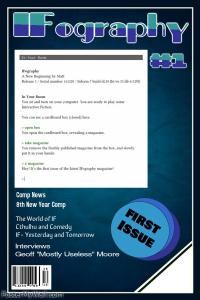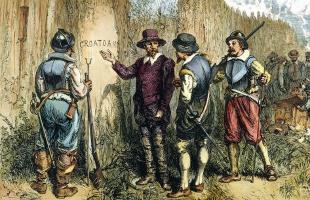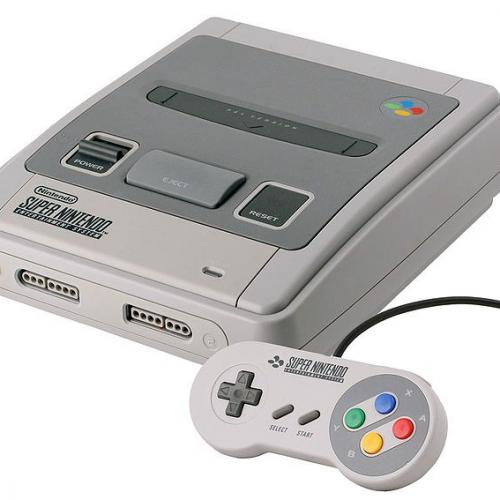Copy Link
Add to Bookmark
Report
MiniSport Laptop Hacker 25

MiniSport Laptop Hacker (TM) - Vol #25. November 1994
To discourage pecuniary interests, Copyright (c) 1994 Brian Mork
>>> ADMIN
Any votes for an index issue yet? Compendiums of all issues are
available from ftp.cs.buffalo.edu as \pub\ham-radio\mlhackXX.zip, or on
SimTel archives (eg. oak.oakland.edu) as
\SimTel\msdos\packet\mlhackXX.zip. The XX in the filename indicates the
last issue number, and replaces the previous convention of using
mlhacker.zip for all compendiums.
>>> CUSTOM BATTERY CHARGER.
Last issue, I concluded Jim Harvey's description of how he made a custom
battery pack using a power drill battery. Now he's built a dedicated
charger unit and found a replacement for the expensive Li batteries.
What a job, Jim! Others, read on!
"My ZL-2's heritage is Garage Sale. It came with neither battery or
charger. I was able to obtain batteries for a reasonable price but
Surplus Communications in St. Joseph wanted $70 for a Zenith charger,
too much for a Garage Sale computer. For a year I have been
unscientifically trickle charging the batteries with a CB radio power
pack connected through a 47 ohm resistor.
"I found several state of the art NiCad charger circuits in QST and
other magazines. Most depended on a tiny droop in battery voltage near
the end of the charge cycle. I wanted to leave the battery in the
computer, though, and the 600 milliamp current surge when turning on the
machine would surely confuse the chip. One of the references I checked
showed simple constant current charge circuits based on the LM317
adjustable voltage regulator(1). The schematic could not be simpler.
Two parts! Figure 1 has added a recommended protection diode and a
bypass capacitor to bring the parts count up to four.
The way this circuit works is: The LM317 will do it's level best to
keep the voltage difference between its output and adjust terminals at
exactly 1.25 volts. This will be the voltage dropped across R1 by a
current of 1.25/R1 amps. The 2.3 ohm value was obtained by paralleling
two 4.7 ohm half watt resistors (at least one watt is needed). This
gives a regulated current of about 530 ma, sufficient to operate the
Minisport with a little left over to charge the battery.
Fig. 1 Basic Constant Current Regulator I = 1.25/R1 = 530 ma.
1N4004 R1
From |\ | In+---------+Out +-----+ To Main
Supply >---| >|----o----| LM317 |----| 2.3 |---o-----> Battery
+10 to |/ | | | | +-----+ |
18 VDC | | | |
| +---------+ |
0.33 ----- |Adj. |
ufd ----- | |
| | |
----- +-------------------+
---
-
What was really needed was a circuit that would pass enough current to
run the computer when it was operating, but would cut back to a
traditional 0.1C charge rate when the machine was off. I added the two
transistor circuit shown below in figure 2.
The switch lead is connected to the Minisport's internal 5 volt power
supply; I obtained this from pin 1 of the internal modem connector (see
MLH #8). When the computer is off, this is at a few tenths of a volt
above ground. Q1 is cut off, which allows Q2 to conduct. Current flow
through the 270 ohm resistor increases the voltage seen by the LM317
adjust terminal and the regulator decreases the current. The 2000 ohm
value of R2 allows an output of about 160 milliamps.
When the Minisport powers up, the 5 volts supplied to the switch sense
lead causes Q1 to conduct which in turn cuts off Q2. The LM317 then
operates as in Figure 1.
Fig. 2 Modified Current Regulator With Trickle Charge Switch
1N4004 R1
From |\ | In+---------+Out +-----+ To Main
Supply >---| >|----o----| LM317 |----| 2.3 |---o-----> Battery
|/ | | | | +-----+ |
| | | +-+
| +---------+ | |
0.33 ----- |Adj. | | 270
ufd ----- | | |
| | +-+
----- | |
--- o--------o----------+
- | |
+-+ +-+
R2 | | | |
| | | | 27K
2K | | | |
+-+ +-+
| |
C | |
Q2 \| |
2N3904 |B----o--C | Switch
/| Q1 \| +-----+ From
E | 2N3904 |B--o-| 33K |---< +5 volt
| /| | +-----+ Supply
----- E | +-+ Pin 1
--- | | | of COM2
- ----- | | 22K Connector
--- | |
- +-+
|
-----
---
-
"I assembled the components on a piece of perf board which slides into
the internal modem slot of the Minisport. It's wired directly into the
main battery terminals at the motherboard. The LM317, for heat sink
purposes, is bolted to the metal bottom plate with a mica insulating
washer underneath and a nylon screw (the tab of the LM317 is connected
to the output terminal.) I epoxied a 2.5 millimeter barrel type power
socket into the phone jack hole of the modem slot cover to connect the
external DC charger supply (a 14 volt 2 amp switcher, another Garage
Sale acquisition). The charger could just as easily be built in an
external box. You would need a 3 wire connector to bring out the 5 volt
switch sense lead though.
"The LM317 current limited charger will happily run the computer from an
auto cigarette lighter socket. You should put an inductor in series
with the lead and use an MOV surge suppressor to protect the machine
from the relatively dirty auto voltage as discussed in MLH #12 and #21.
"Another improvement made while I had the Minisport disassembled was to
discard the expensive coin cell backup batteries and functionally
replace them with a set of small NiCads tucked in the modem compartment.
There are several cordless phone batteries that can be fitted into the
space. You need five NiCad cells for the necessary 6 volts, use thin
wire wrap wire to carry the current over to the terminals on the edge of
the motherboard adjacent to the coin cell compartment. To keep the new
backup battery topped off I connected the positive side to the new
charger input jack through a 1000 ohm resistor. This will allow
somewhat less than 10 milliamps to trickle in which is reasonable
considering the limited duty cycle of the backup system. It is only in
use while the main battery is being changed or is completely discharged.
"(1) Engineer's Notebook - Integrated Circuit Applications, 1980
Edition, Forest H. Mims, (C) Radio Shack. [BjM: I use a similar, simple
circuit to drive my laser diode experiments. It works well.]
Please provide feedback! * Direct data 1-509-244-9260
* ARO Net KA9SNF@ka7fvv.#ewa.wa.usa
* Internet bmork@opus-ovh.spk.wa.us
73, Brian * 6006-B Eaker, Fairchild, WA 99011

















